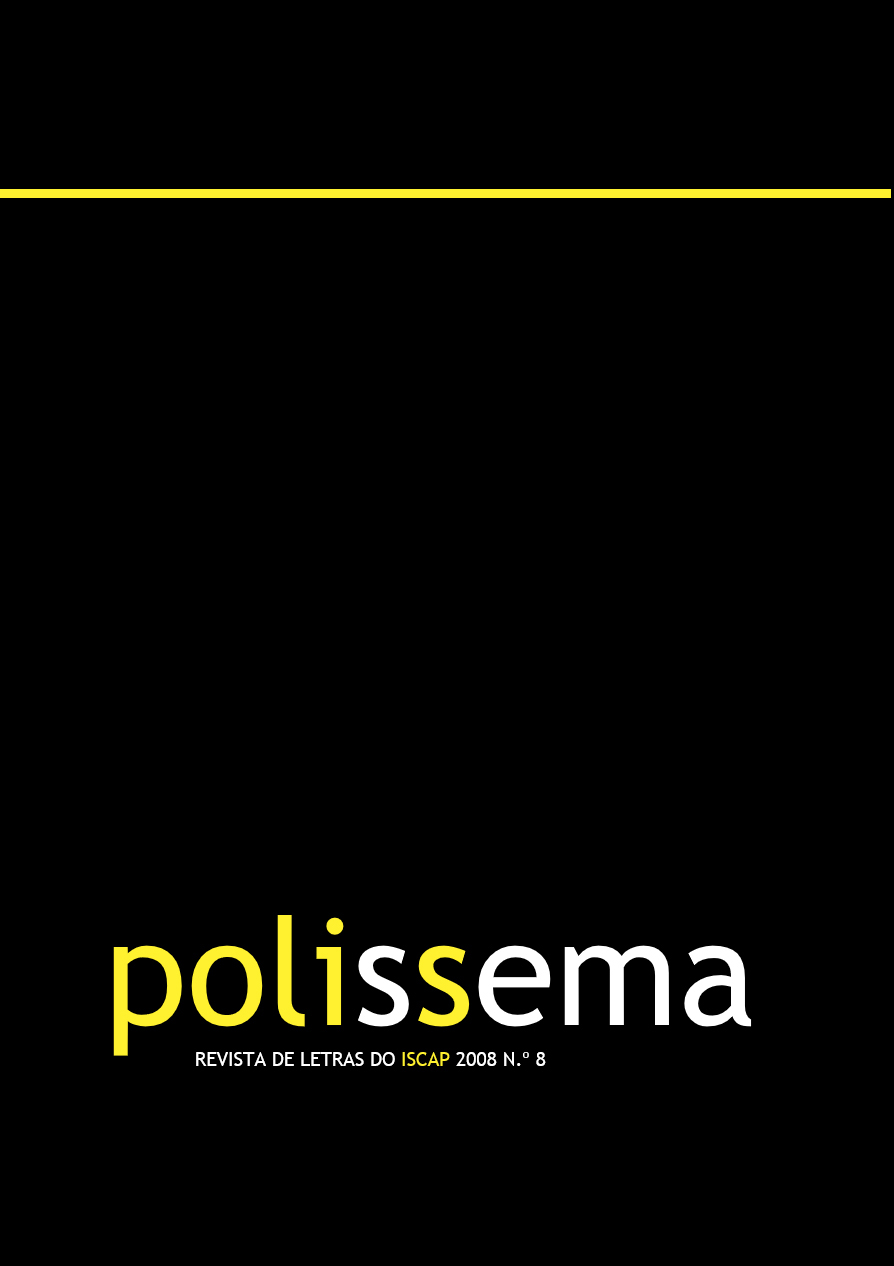REPRESENTATIONS OF PORTUGAL IN HERMANN HESSE, PHILIP ROTH AND PAUL AUSTER
DOI:
https://doi.org/10.34630/polissema.vi8.3282Keywords:
Representations of Portugal, Peirce, icons, indices, symbols, Hermann Hesse, Philip Roth, Paul AusterAbstract
The aim of my research is to answer the question: How is Portugal seen by non-Portuguese fictionists? The main reason why I chose this research line is the following: Portuguese essayists like Eduardo Lourenço and José Gil (2005) focus their attention on the image or representation of Portugal as conceived by the Portuguese; indeed there is a tendency in Portuguese cultural studies (and, to a certain extent, also in Portuguese philosophical studies) to focus on studying the so-called ‘portugalidade’ (portugueseness), i.e., the essence of being Portuguese. In my view, the problem with the studies I have been referring to is that everything is self-referential, and if ‘portugueseness’ is an issue, then it might be useful, when dealing with it, to separate subject from object of observation. That is the reason why we, in the CEI (Centro de Estudos Interculturais), decided to start this research line, which is an inversion in the current tendency of the studies about ‘portugueseness’: instead of studying the image or representation of Portugal by the Portuguese, my task is to study the image or representation of Portugal by the non-Portuguese, in this case, in non-Portuguese fiction. For the present paper I selected three writers of the 20th century: the German Hermann Hesse and the North-Americans Philip Roth and Paul Auster.
Downloads
Published
How to Cite
Issue
Section
License
Copyright (c) 2008 POLISSEMA – ISCAP Journal of Letters

This work is licensed under a Creative Commons Attribution-NonCommercial-NoDerivatives 4.0 International License.


